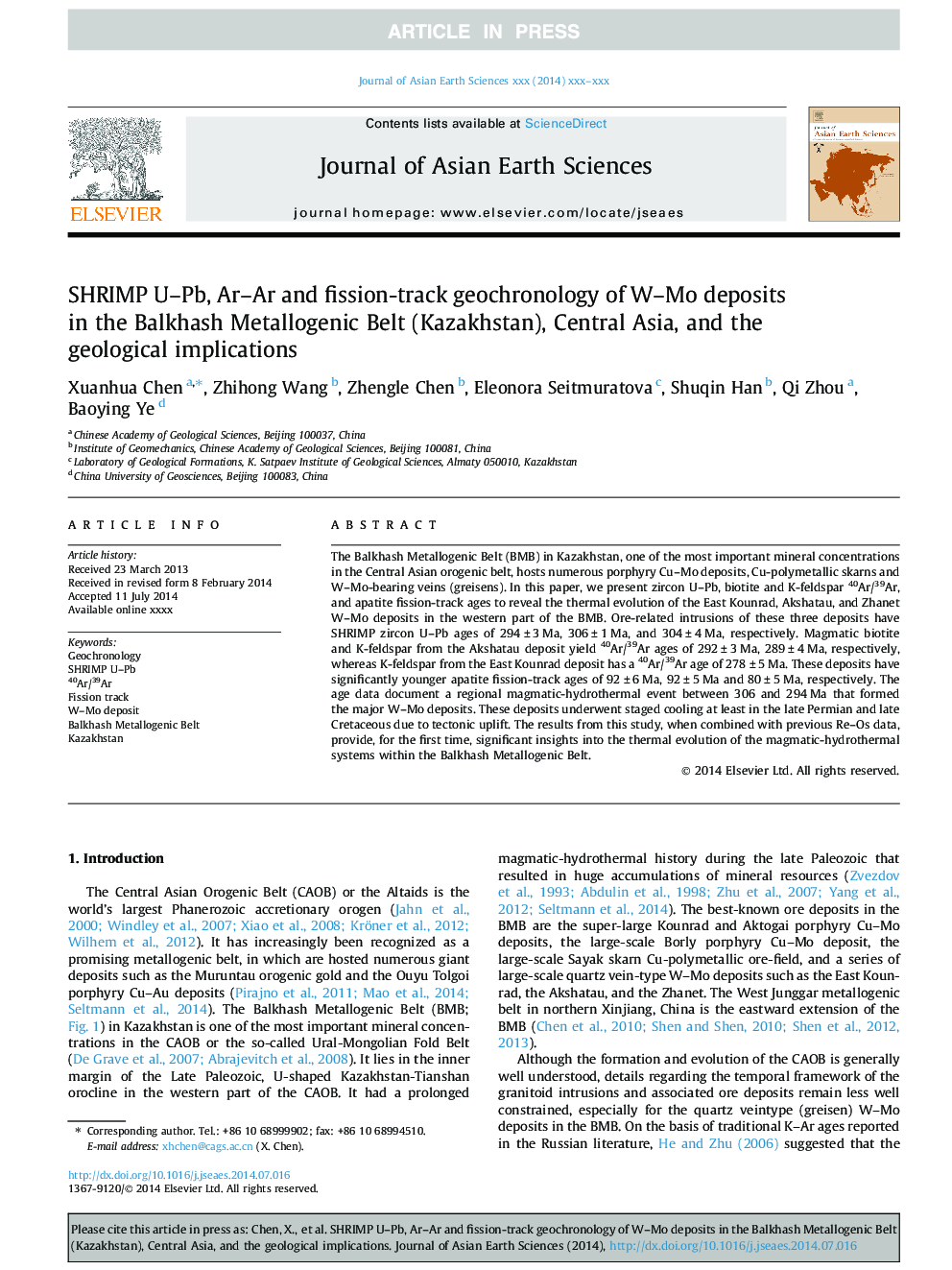| Article ID | Journal | Published Year | Pages | File Type |
|---|---|---|---|---|
| 6444094 | Journal of Asian Earth Sciences | 2015 | 14 Pages |
Abstract
The Balkhash Metallogenic Belt (BMB) in Kazakhstan, one of the most important mineral concentrations in the Central Asian orogenic belt, hosts numerous porphyry Cu-Mo deposits, Cu-polymetallic skarns and W-Mo-bearing veins (greisens). In this paper, we present zircon U-Pb, biotite and K-feldspar 40Ar/39Ar, and apatite fission-track ages to reveal the thermal evolution of the East Kounrad, Akshatau, and Zhanet W-Mo deposits in the western part of the BMB. Ore-related intrusions of these three deposits have SHRIMP zircon U-Pb ages of 294 ± 3 Ma, 306 ± 1 Ma, and 304 ± 4 Ma, respectively. Magmatic biotite and K-feldspar from the Akshatau deposit yield 40Ar/39Ar ages of 292 ± 3 Ma, 289 ± 4 Ma, respectively, whereas K-feldspar from the East Kounrad deposit has a 40Ar/39Ar age of 278 ± 5 Ma. These deposits have significantly younger apatite fission-track ages of 92 ± 6 Ma, 92 ± 5 Ma and 80 ± 5 Ma, respectively. The age data document a regional magmatic-hydrothermal event between 306 and 294 Ma that formed the major W-Mo deposits. These deposits underwent staged cooling at least in the late Permian and late Cretaceous due to tectonic uplift. The results from this study, when combined with previous Re-Os data, provide, for the first time, significant insights into the thermal evolution of the magmatic-hydrothermal systems within the Balkhash Metallogenic Belt.
Related Topics
Physical Sciences and Engineering
Earth and Planetary Sciences
Geology
Authors
Xuanhua Chen, Zhihong Wang, Zhengle Chen, Eleonora Seitmuratova, Shuqin Han, Qi Zhou, Baoying Ye,
